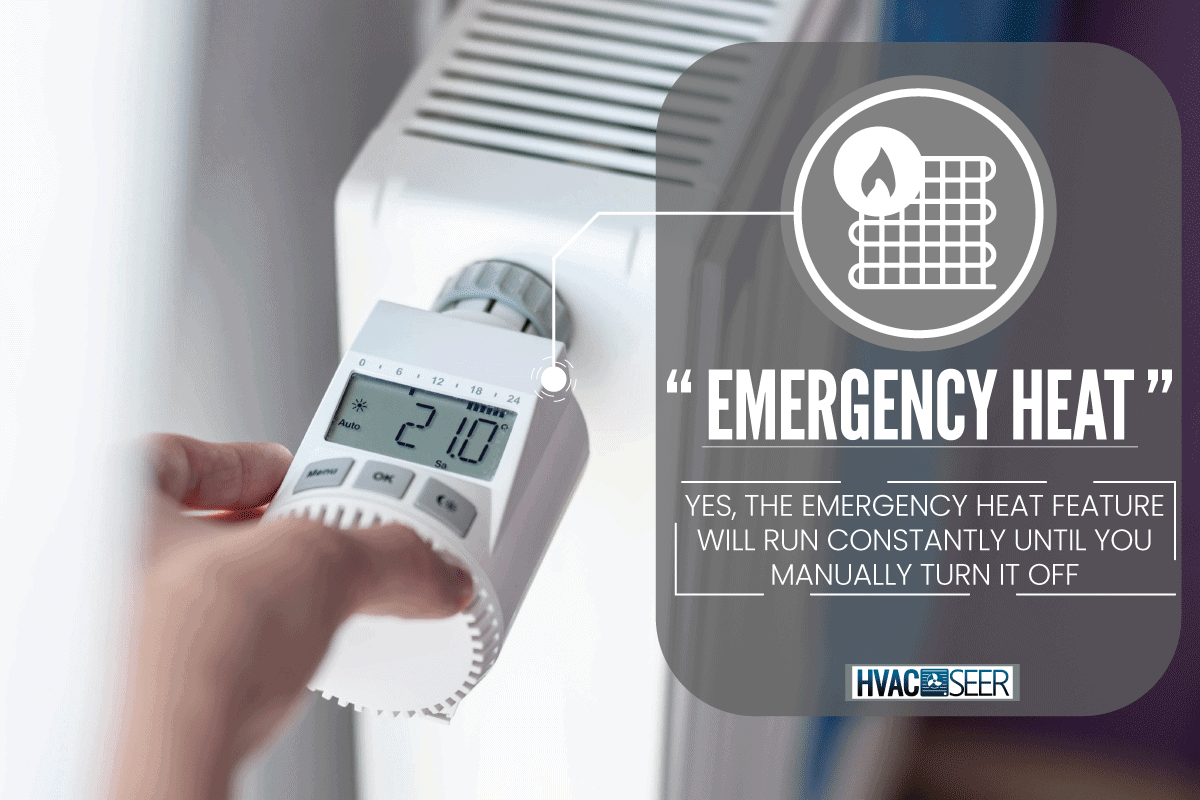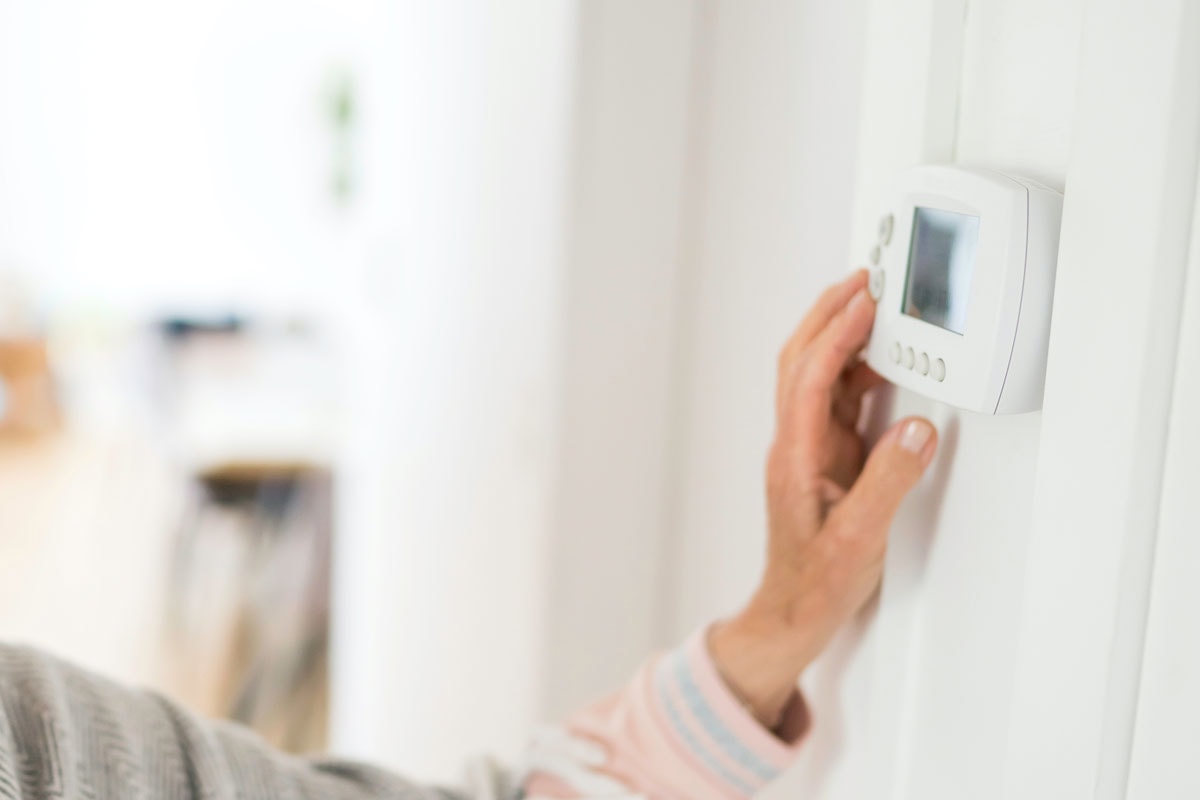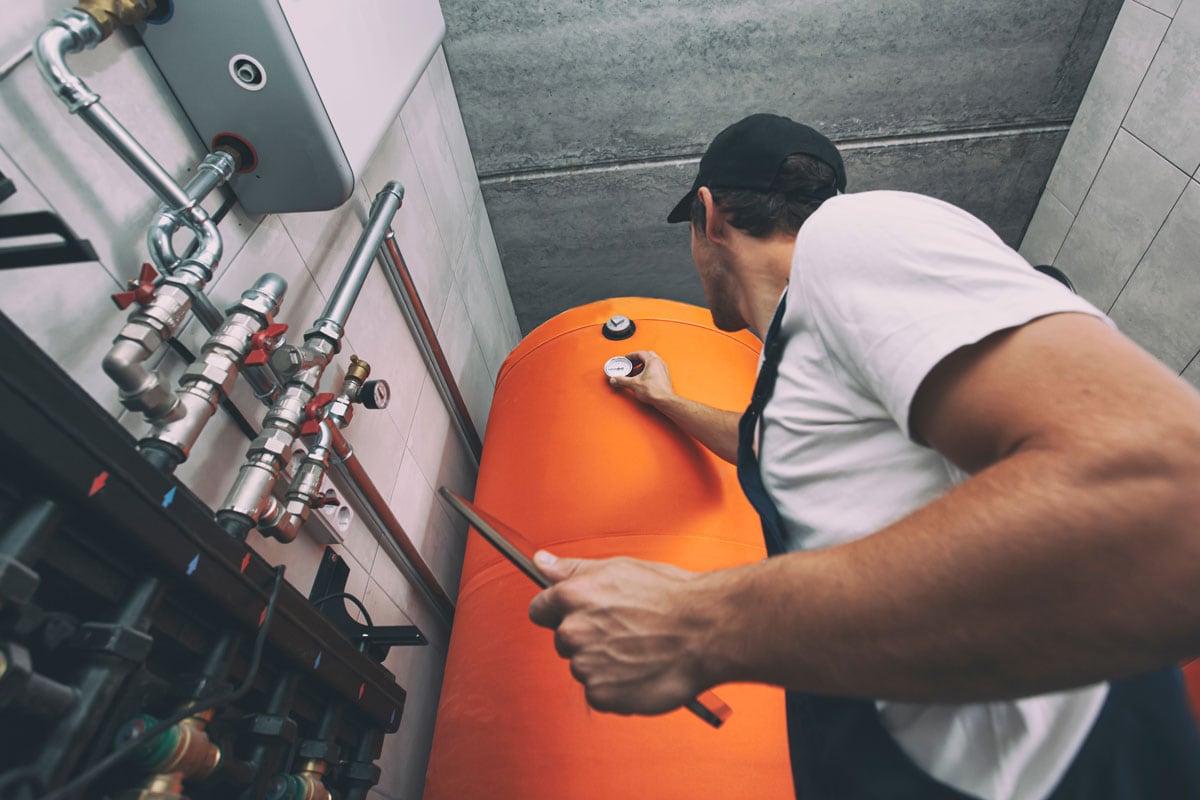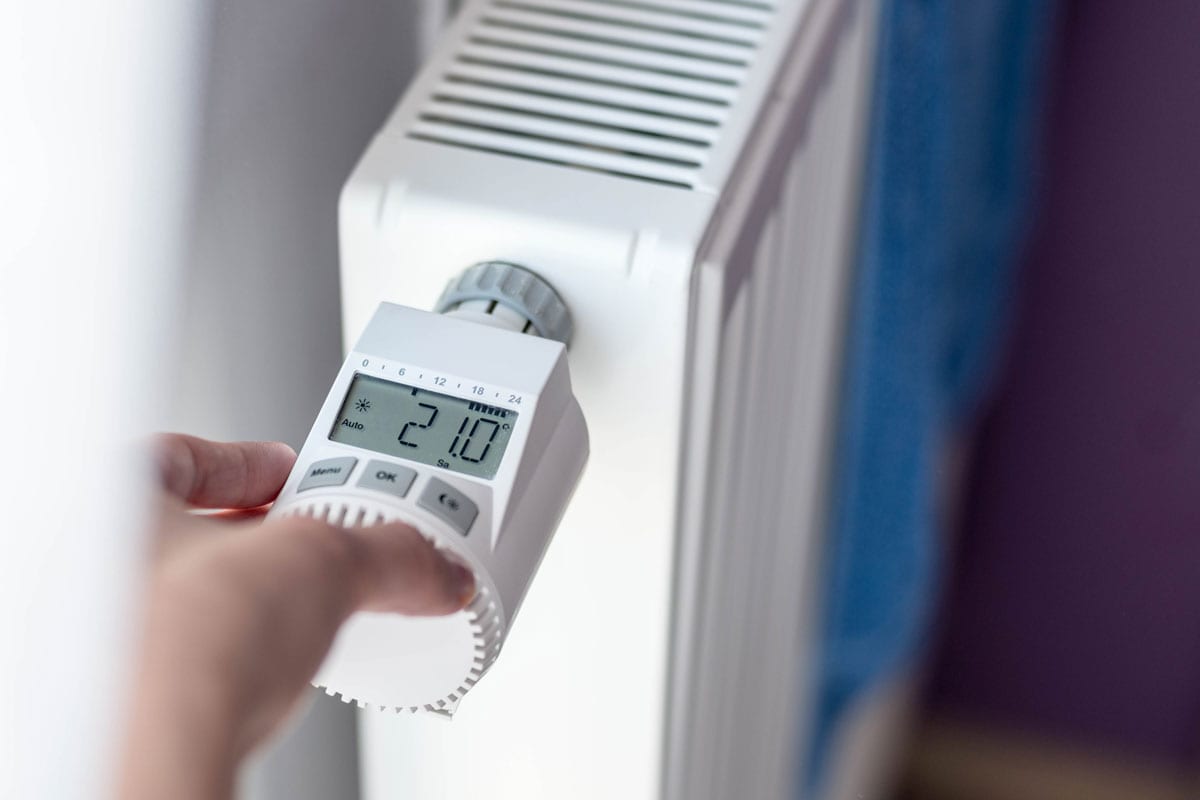When you feel that your heating system isn't heating your home fast enough and you activate the emergency heat on the thermostat, will it stay on all the time? That's what we asked the HVAC experts and here's their answer.
Yes, the emergency heat feature will run constantly until you manually turn the feature off on your thermostat. Be careful, though, because this makes use of your secondary heat source, which isn't designed to carry the load of heating the home for a long time.
Electric heat strips also consume a lot of energy, which would be evident on your electric bill.
Keep on reading to learn more about this emergency heat feature and what it does to your home. We'll also tell you when this feature automatically activates and when you should set it manually. Lastly, we'll answer if you can run your emergency heat overnight. Let's get started!

Does emergency heat stay on all the time?
Your HVAC system at home has a heat pump that works in the reverse way of your AC unit. It transfers heat from the outside toward your home so that you'll be warm and cozy despite the chilly weather.
Of course, when the weather gets really cold outside, the heat pump would find it harder to draw heat from the outside environment. That's when it would supplement its heating efforts with the backup heat source of your heat pump.
These are strips of electric heat coils that provide heat with the use of electricity. When you use the supplemental heat source, especially when the temperature drops below 40 degrees Fahrenheit, it would consume a lot of electricity to be able to heat your home to a comfortable level.
This would mean a higher energy cost on your end. But some secondary heat sources can be powered by gas or oil so that you know your options in case you're worried about soaring electric bills.
As a user, you can activate the Emergency Heat setting on your thermostat. When you see "em heat" on the screen, it means that this feature has been activated and your heat pump would be using your backup heat source as the main source of heat.
It would immediately stop using the heat pump or extracting heat from the outside to transfer that heat indoors. At this time, the emergency heat will run constantly.
It'll be like an electric furnace if you're using electric heat strips. It would only stop running when you manually turn off the emergency heat setting on your thermostat.
Experts say that you should only turn on the emergency heat setting on your thermostat during emergencies, like when your heat pump stops working, and it shouldn't be left running for a long time. You need to turn it off as soon as the main heat pump is up and running.

Is Emergency Heat the same as Auxiliary Heat?

You will see both of these features on your thermostat. While the function is the same, how each feature is activated and turned off is different.
You have control over when to use the emergency heat feature. You can turn it on when you feel that you're not getting your desired warm temperature inside your house or when your heat pump suddenly stops working for some reason.
These emergency cases call for the use of the emergency heat setting. But take note that you also need to turn it off manually so that you can use your heat pump again.
If something is wrong with your heat pump, which is why you activated the emergency heat feature, you would need to call an HVAC service provider immediately to have the issue fixed.
There are also times when your HVAC system would automatically turn on your secondary heat source but it would also turn it off when the right conditions are met. This is the auxiliary heat feature.
Both the emergency heat and auxiliary heat features make use of your HVAC system's supplemental heat source. This means that your heat pump would stop working. Your HVAC system would only go back to your normal heating cycle when these features are deactivated.
Why does my emergency heat keep coming on?
Being your supplemental heat source, the auxiliary heat can be automatically activated by your HVAC system when the situation calls for it. These are examples of such instances:
- It would turn on when the outside temperature drops below 40 degrees Fahrenheit. The heat pump would barely be able to extract any heat from its surroundings.
- It would be activated as your heat pump is defrosting from being exposed to freezing temperatures.
- It usually turns on when there's at least a 3-degree difference between your thermostat and the current indoor temperature.
Your HVAC system will automatically turn on the auxiliary heat setting during these situations but it'll also turn it off right away as soon as the right conditions exist.
Of course, as discussed earlier, you can also manually turn on the emergency heat feature should you feel that a supplemental heat source is needed.
However, you also need to watch out for those instances when your emergency heat still turns on despite outside temperatures being higher than 40 degrees Fahrenheit. It could mean that your heat pump is not working properly as it couldn't detect the temperature change.
Other signs to look out for are unusually high electric bills and your HVAC system's incapacity to maintain the temperature that you've set on the thermostat making you still feel chilly at home despite wearing thick clothes and being wrapped in a heavy blanket.
When should I switch my heat pump thermostat to an emergency?

Now that you know that you have full control of the emergency heat setting, it's time to know the right situations when you should use this feature so that you don't end up spending more on your electric bills.
Here are the instances when you should switch your thermostat to emergency heat.
To Give Your Heat Pump a Break
When there are consecutive days of freezing temperatures outside, your heat pump is on overdrive trying to extract outdoor heat to be transferred to your home.
Since there's hardly any heat if the temperature drops for days, it would be better to give your heat pump a break so that it won't be overworked.
When the Heat Pump Breaks
This is what you're trying to avoid but if this happens, you have no choice but to use your secondary heat source to keep you warm. Your heat pump could break down due to overheating or it could be damaged due to a snow storm making it unable to do its job.
But take note that you should also call your trusted HVAC service provider when this happens so that they can help you restore your normal heating cycle at home at the soonest time possible.
Your backup heat source isn't designed to be your main source of heat at home for a reason. This load can be too much on the appliance, and it'll also break down if used for a long period.
Not to mention the increased energy consumption for heating which would make your electric bill soar. Of course, this isn't much of an issue when you have a gas or oil-powered furnace at home.
Can I run emergency heat overnight?
![]()
When the emergency lasts overnight, would it still be okay to use your secondary heat source? We've been telling you not to run the emergency heat for a long time but how much time are we really talking about?
To answer these questions: yes, it is okay to run your emergency heat overnight. There is no definite number of hours for its running time.
You're supposed to use it only during emergency situations, and you should have your heat pump fixed right away to resolve the issue. Once it is fixed, turn off the emergency heat immediately.
The main concerns here are that the secondary heat source might not be able to handle the load of heating your house for a long time. If you use it for a long time, we may be talking about more costly repairs to your HVAC system.
Also, it is more expensive to run than your heat pump. It consumes more electricity and you have to pay for its energy consumption on top of the regular rate for your HVAC system.
To illustrate this point, you would ordinarily spend around $32.76 a week when using your heat pump whereas your electric bill would soar to $196.56 per week if you use the emergency heat.
That's a huge difference! So don't use your emergency heat when it's not needed.
Final Thoughts

You can turn on your thermostat's emergency heat feature, and it'll continue running until you turn it off manually. You always have control over this feature in your thermostat.
Just be mindful when using it, as it could significantly affect your electric bill, and your secondary heat source might not be able to handle the workload if you use it for a long time.
To read more on related topics, feel free to visit the following links:
